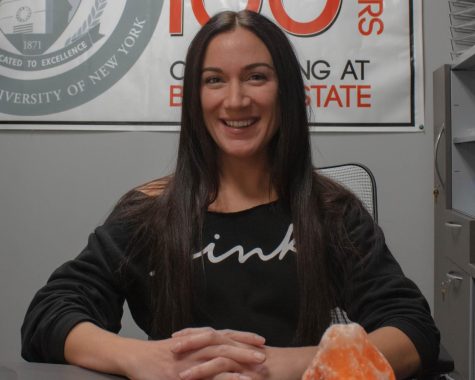Superbowl LVI did not do Deaf performers justice
Split screen image of ASL performance and halftime show.
February 15, 2022
The legendary halftime musical lineup and inventive commercials were among the hype surrounding the 2022 Super Bowl. Equally exciting was the anticipated first-ever sign language performance featuring two Deaf artists.
On February 13, the Miami Herald wrote “Two deaf rappers, Sean Forbes and Warren “WaWa” Snipe, will appear alongside some of hip-hop’s most storied performers during the Super Bowl halftime show.”
Yahoo wrote “This year’s halftime show will also be making history: Two deaf rappers will also be featured in the performance.”
“Dr. Dre added deaf stars Warren “Wawa” Snipe and Sean Forbes to Sunday’s lineup that also includes Eminem, Snoop Dogg, Mary J. Blige, and Kendrick Lamar,” wrote ABC News.
So, where were they?
Being an American Sign Language student has introduced me to a new awareness and appreciation for the Deaf community. You can imagine my eagerness to witness history in the making. My eyes were glued to the screen for the entire halftime show, scanning the faces of the artists and dancers waiting to spot Forbes or Snipe.
Were they in one of the several rooms of the makeshift “house” the musicians were performing on? Were they standing on the hood of one of the classic cars that were driven onto the field? Would they be brought out in the middle of the performance, or towards end as a grand finale?
The halftime show came and went. I found myself frantically searching YouTube to see if I had missed something.
After a little semi-extensive searching, I found instructions on Forbes’ Instagram page on how the Deaf audience could view the performance. They would need to download the NBC Sports app and watch from their phone or computer along with the TV.
This was a far cry from what the media had claimed would take place. Understandably, I had expected to see Forbes and Snipe physically on stage, included in the actual performance.
After a few hours, the video was finally available on YouTube. With a sunken heart I watched as the rappers performed in a seemingly dark corner of SoFi Stadium with a meager audience present. On the split screen I watched as Snoop Dogg, Dr Dre, and Eminem were surrounded by dancers, flashing lights, cameras and props.
Forbes, a 40-year-old hip-hop artist from Detroit, and Snipe, a 50-year-old writer and performer, were energetic, fun, and didn’t miss a beat. According to their social media posts and interviews, they were proud and honored to be there. They had the time of their lives.
As happy as I felt for them, I couldn’t help but feel unfulfilled and disappointed in general. This felt like the organization’s unfair, pitiful attempt at showing how “inclusive” they are.
The extra hoops they sent viewers through to have access to the performance.
The undeserved media attention praising them for their “groundbreaking” decision to feature Deaf performers.
The feeble separate area to which they were secluded during the show.
The complete lack of footage on television.
History shows that change happens at a steady pace. It has to start somewhere, and sometimes that start is small. But in 2022, it’s becoming harder and harder to justify so painfully missing the mark.





